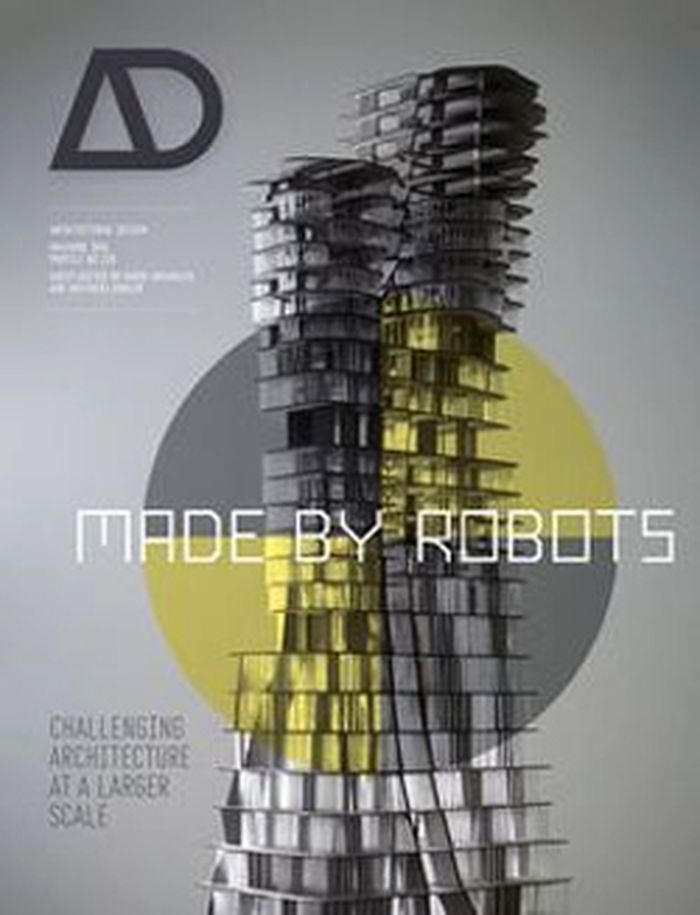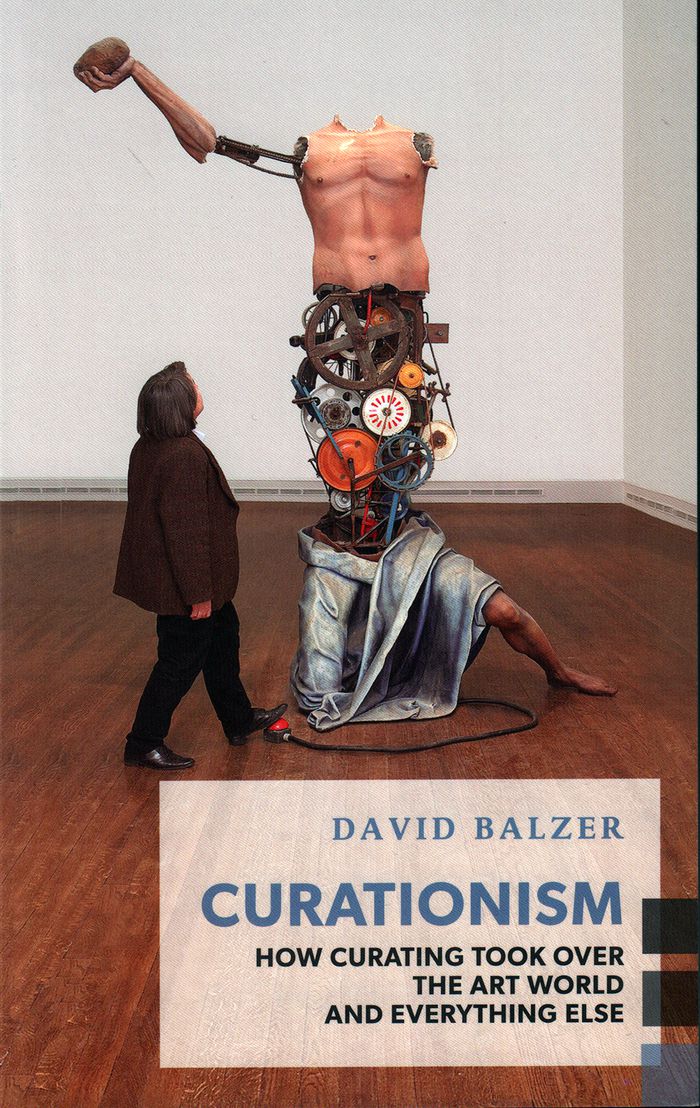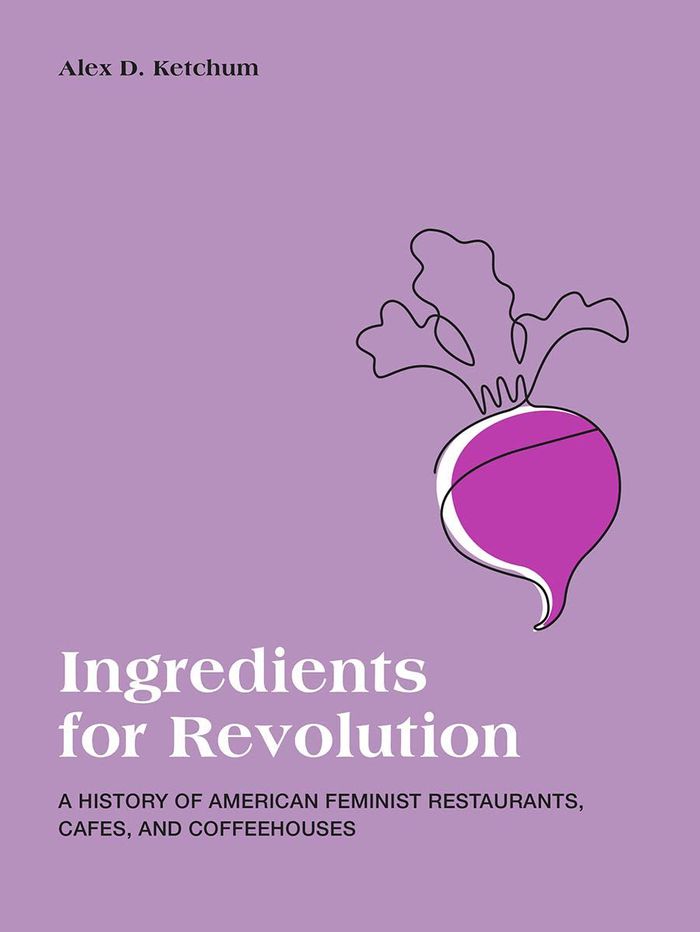$103.00
(available to order)
Summary:
Current design of apartment buildings is facing challenges of philosophy and form. Past approaches no longer sustain new demands and require innovative thinking. The need for a new outlook is propelled by fundamental changes that touch upon environmental, economic, cultural and social aspects that led to the writing of this book. The depletion of non-renewable natural(...)
Innovative apartment buildings. New directions in sustainable design
Actions:
Price:
$103.00
(available to order)
Summary:
Current design of apartment buildings is facing challenges of philosophy and form. Past approaches no longer sustain new demands and require innovative thinking. The need for a new outlook is propelled by fundamental changes that touch upon environmental, economic, cultural and social aspects that led to the writing of this book. The depletion of non-renewable natural resources and climate change are a few of the environmental challenges that prompted designers to reconsider conceptual approaches in favour of ones that promote a better suitability between buildings and their environments. Concepts that minimize the building?s carbon footprint, passive solar gain, net-zero structures and water harvesting system are some of the contemporary strategies that architects and builders are integrating into their thought processes and design. Increasing costs of material, labour, land and infrastructure have posed economic challenges with affordability being paramount among them. The need to do with less brings about concepts that include adaptable dwellings, and smaller-sized yet quality-designed housing. Social challenges are also drawing attention.
Collective Housing
$33.95
(available to order)
Summary:
The ubiquitous nature and political attraction of the concept of order has to be understood in conjunction with the idea of police. Since its first publication, this book has been one of the most powerful and wide-ranging critiques of the police power. Neocleous argues for an expanded concept of police, able to account for the range of institutions through which(...)
A critical theory of police power
Actions:
Price:
$33.95
(available to order)
Summary:
The ubiquitous nature and political attraction of the concept of order has to be understood in conjunction with the idea of police. Since its first publication, this book has been one of the most powerful and wide-ranging critiques of the police power. Neocleous argues for an expanded concept of police, able to account for the range of institutions through which policing takes place. These institutions are concerned not just with the maintenance and reproduction of order, but with its very fabrication, especially the fabrication of a social order founded on wage labour. By situating the police power in relation to both capital and the state and at the heart of the politics of security, the book opens up into an understanding of the ways in which the state administers civil society and fabricates order through law and the ideology of crime. The discretionary violence of the police on the street is thereby connected to the wider administrative powers of the state, and the thud of the truncheon to the dull compulsion of economic relations.
Social
$43.95
(available to order)
Summary:
In the next decade or so, the widespread adoption of robotics is set to transform the construction industry: building techniques will become increasingly automated both on- and off-site, dispensing with manual labour and enabling greater cost and operational efficiencies. What unique opportunities, however, does robotics afford beyond operational effectiveness explicitly(...)
May 2014
AD Made by robots: challenging architecture at a larger scale
Actions:
Price:
$43.95
(available to order)
Summary:
In the next decade or so, the widespread adoption of robotics is set to transform the construction industry: building techniques will become increasingly automated both on- and off-site, dispensing with manual labour and enabling greater cost and operational efficiencies. What unique opportunities, however, does robotics afford beyond operational effectiveness explicitly for the practice of architecture? What is the potential for the serial production of non-standard elements as well as for varied construction processes? In order to scale up and advance the application of robotics, for both prefabrication and on-site construction, there needs to be an understanding of the different capabilities, and these should be considered right from the start of the design and planning process. This issue of "AD" showcases the findings of the Architecture and Digital Fabrication research module at the ETH Zurich Future Cities Laboratory in Singapore, directed by Fabio Gramazio and Matthias Kohler, which explores the possibilities of robotic construction processes for architecture and their large-scale application to the design and construction of high-rise buildings.
$13.95
(available to order)
Summary:
Now that we 'curate' even lunch, what happens to the role of the connoisseur in contemporary culture? 'Curate' is now a buzzword, applied to everything from music festivals to artisanal cheese. Inside the art world, the curator reigns supreme, acting as the face of high-profile group shows and biennials in a way that can eclipse and assimilate the contributions of(...)
Curationism: how curating took over the art world and everything else
Actions:
Price:
$13.95
(available to order)
Summary:
Now that we 'curate' even lunch, what happens to the role of the connoisseur in contemporary culture? 'Curate' is now a buzzword, applied to everything from music festivals to artisanal cheese. Inside the art world, the curator reigns supreme, acting as the face of high-profile group shows and biennials in a way that can eclipse and assimilate the contributions of individual artists. Curatorial-studies programs continue to grow, and the business world is adopting curation as a means of adding value to content. Everyone, it seems, is a curator. But what is a curator, exactly? And what does the explosive popularity of curating say about our culture's relationship with taste, labour and the avant-garde? In this vibrant, revelatory and original study, David Balzer travels through art history and around the globe to explore the cult of curation, from superstar curator Hans Ulrich Obrist's war with sleep to Subway's 'sandwich artists.' Recalling such landmark works of cultural criticism as Tom Wolfe's The Painted Word and John Berger's Ways of Seeing, Curationism will change the way you look at art - and maybe even the way you see yourself.
Museology
books
Description:
[16], 811, [45] pages, [3] folded leaves of plates : illustrations ; 24 cm
A Paris : Chez Robert Foüet ..., M. DCVII. [1607]
La maison champestre et agricvltvre / d'Elie Vinet Xainctongeois: et Antoine Mizavld de Mollvsson. Divisee en cinq parties. La premiere est l'arpenterie et vraye maniere d'arpenter & iustement mesurer tous heritages, terres labourables, prez ... & taillis: pour facilement cognoistre la hauteur du soleil & des estoilles ... ou maniere de faire quadrans & solaires. Plvs est amplement monstré la facon d'embellir les iardins, les entretenir de toutes sortes de fleurs & plantes, & les preseruer de toute vermine: pour bien faire pepinieres ... & cognoistre leurs vertus & secrets ; avec le iardin medecinal et la facon d'vser de la vertu des herbes, & plantes pour s'en seruir & promptement remedier aux maladies ... Oevvre tres necessaire a tovtes personnes qui resident aux champs.
Actions:
Holdings:
Description:
[16], 811, [45] pages, [3] folded leaves of plates : illustrations ; 24 cm
books
A Paris : Chez Robert Foüet ..., M. DCVII. [1607]
books
Toronto sprawls
$24.95
(available to order)
Summary:
With a landmass spanning approximately 7000 square kilometres and a population of roughly five million, the Greater Toronto Area is Canada’s largest metropolitan centre. How did a small nineteenth-century colonial capital become this sprawling urban giant, and how did government policies shape the contours of its landscape? In Toronto Sprawls, Lawrence Solomon examines(...)
Toronto sprawls
Actions:
Price:
$24.95
(available to order)
Summary:
With a landmass spanning approximately 7000 square kilometres and a population of roughly five million, the Greater Toronto Area is Canada’s largest metropolitan centre. How did a small nineteenth-century colonial capital become this sprawling urban giant, and how did government policies shape the contours of its landscape? In Toronto Sprawls, Lawrence Solomon examines the great migration from farm to the city that occurred in the last half of the nineteenth century. During this period, a disproportionate number of single women came to Toronto, while at the same time, immigration from abroad was swelling the city’s urban boundaries. Labour unions were also increasingly successful in recruiting urban workers in these years. Governments responded to these perceived threats with a series of policies designed to foster order. To promote single family dwellings conducive to the traditional family, buildings in high-density areas were razed and apartment buildings banned. To discourage returning First World War veterans from settling in cities, the government offered grants to spur rural settlement. These policies and others dispersed the city’s population and promoted sprawl. An illuminating read, Toronto Sprawls makes a convincing case that urban sprawl in Toronto was not caused by market forces, but rather policies and programs designed to disperse Toronto’s urban population.
books
April 2007, Toronto
Architecture in Canada
$16.95
(available to order)
Summary:
At a time when socialism is entering a historic crisis and we are witnessing a worldwide expansion of capitalist relations, a feminist rethinking of Marx’s work is vitally important. In ''Patriarchy of the wage,'' Silvia Federici, best-selling author and the most important Marxist feminist of our time, asks why Marx and the Marxist tradition were so crucial in their(...)
Patriarchy of the wage: notes on Marx, gender, and feminism
Actions:
Price:
$16.95
(available to order)
Summary:
At a time when socialism is entering a historic crisis and we are witnessing a worldwide expansion of capitalist relations, a feminist rethinking of Marx’s work is vitally important. In ''Patriarchy of the wage,'' Silvia Federici, best-selling author and the most important Marxist feminist of our time, asks why Marx and the Marxist tradition were so crucial in their denunciation of capitalism’s exploitation of human labour and blind to women’s work and struggle on the terrain of social reproduction. Why was Marx unable to anticipate the profound transformations in the proletarian family that took place at the turn of the nineteenth century, creating a new patriarchal regime? In this fiery collection of penetrating essays published here for the first time, Federici carefully examines these questions and in the process has provided an expansive redefinition of work, class, and class-gender relations. Seeking to delineate the specific character of capitalist “patriarchalism,” this magnificently original approach also highlights Marx’s and the Marxist tradition’s problematic view of industrial production and the State in the struggle for human liberation. Federici’s lucid argument that most reproductive work is irreducible to automation is a powerful reminder of the poverty of a revolutionary imagination that consigns to the world of machines the creation of the material conditions for a communist society.
Social
$32.95
(available to order)
Summary:
How did a First World urban population come to imagine itself as part of a global anti-colonial movement? This book tackles this and other paradoxes created by the surprising power and influence of Third World decolonization on political activism in 1960s Montreal. In a brilliant history of a turbulent time and place, Mills pulls back the curtain on the decade's(...)
The empire within: postcolonial thought and political activism in Sixties Montréal
Actions:
Price:
$32.95
(available to order)
Summary:
How did a First World urban population come to imagine itself as part of a global anti-colonial movement? This book tackles this and other paradoxes created by the surprising power and influence of Third World decolonization on political activism in 1960s Montreal. In a brilliant history of a turbulent time and place, Mills pulls back the curtain on the decade's activists and intellectuals, showing their engagement both with each other and with people from around the world. He demonstrates how activists of different backgrounds and with different political aims drew on ideas of decolonization to rethink the meanings attached to the politics of sex, race, and class and to imagine themselves as part of a broad transnational movement of anti-colonial and anti-imperialist resistance. The temporary unity forged around ideas of decolonization came undone in the 1970s, however, as many were forced to come to terms with the contradictions and ambiguities of applying ideas of decolonization in Quebec. From linguistic debates to labour unions, and from the political activities of citizens in the city's poorest neighbourhoods to its Caribbean intellectuals, this publication is a political tour of Montreal that reconsiders the meaning and legacy of the city's dissident traditions. It is also a fascinating chapter in the history of postcolonial thought.
Architecture de Montréal
Ingredients for revolution: A history of American feminist restaurants, cafés and coffeehouses
$34.95
(available in store)
Summary:
Coinciding with the fiftieth anniversary of the trailblazing restaurant Mother Courage of New York City, "Ingredients for revolution" is the first history of the more than 230 feminist and lesbian-feminist restaurants, cafes, and coffeehouses that existed in the United States from 1972 to the present. As key sites of cultural and political significance, this volume shows(...)
Ingredients for revolution: A history of American feminist restaurants, cafés and coffeehouses
Actions:
Price:
$34.95
(available in store)
Summary:
Coinciding with the fiftieth anniversary of the trailblazing restaurant Mother Courage of New York City, "Ingredients for revolution" is the first history of the more than 230 feminist and lesbian-feminist restaurants, cafes, and coffeehouses that existed in the United States from 1972 to the present. As key sites of cultural and political significance, this volume shows the essential role these institutions served for multiple social justice movements including women’s liberation, LGBTQ equality, and food justice, as well as for training women workers and entrepreneurs. This systematic study outlines the crucial steps it took to establish these businesses during eras when sexism was so institutionalized it was difficult for unmarried women to obtain a bank loan, while also showing the continuities and influences of past businesses on contemporary places. Through an examination of important establishments across America, Alex Ketchum first examines the foundational principles behind these businesses, noting key differences between cooperative, for-profit, and non-profit models. She then looks to issues of financing, labour, pay, food sourcing, and cultural programming to understand how these organizations reconciled feminist beliefs with capitalism and how they strove for more equitable and sustainable business practices. Brimming with illuminating archival research, interviews with influential restaurateurs, and illustrated with photographs, menus, posters, and calendars, "Ingredients for revolution" is a fundamental work of women’s history, food history, and cultural history.
Social
$33.95
(available to order)
Summary:
With the concept of the ''Imperial mode of living,'' Brand and Wissen highlight the fact that capitalism implies uneven development as well as a constant and accelerating universalisation of a Western mode of production and living. The logic of liberal markets since the nineteenth century, and especially since World War II, has been inscribed into everyday practices that(...)
The imperial mode of living: everyday life and the ecological crisis of capitalism
Actions:
Price:
$33.95
(available to order)
Summary:
With the concept of the ''Imperial mode of living,'' Brand and Wissen highlight the fact that capitalism implies uneven development as well as a constant and accelerating universalisation of a Western mode of production and living. The logic of liberal markets since the nineteenth century, and especially since World War II, has been inscribed into everyday practices that are usually unconsciously reproduced. The authors show that they are a main driver of the ecological crisis and economic and political instability. ''The imperial mode of living'' implies that people’s everyday practices, including individual and societal orientations, as well as identities, rely heavily on the unlimited appropriation of resources; a disproportionate claim on global and local ecosystems and sinks; and cheap labour from elsewhere. This availability of commodities is largely organised through the world market, backed by military force and/or the asymmetric relations of forces as they have been inscribed in international institutions. Moreover, the ''Imperial mode of living'' implies asymmetrical social relations along class, gender and race within the respective countries. Here too, it is driven by the capitalist accumulation imperative, growth-oriented state policies and status consumption. The concrete production conditions of commodities are rendered invisible in the places where the commodities are consumed. The imperialist world order is normalised through the mode of production and living.
Critical Theory







